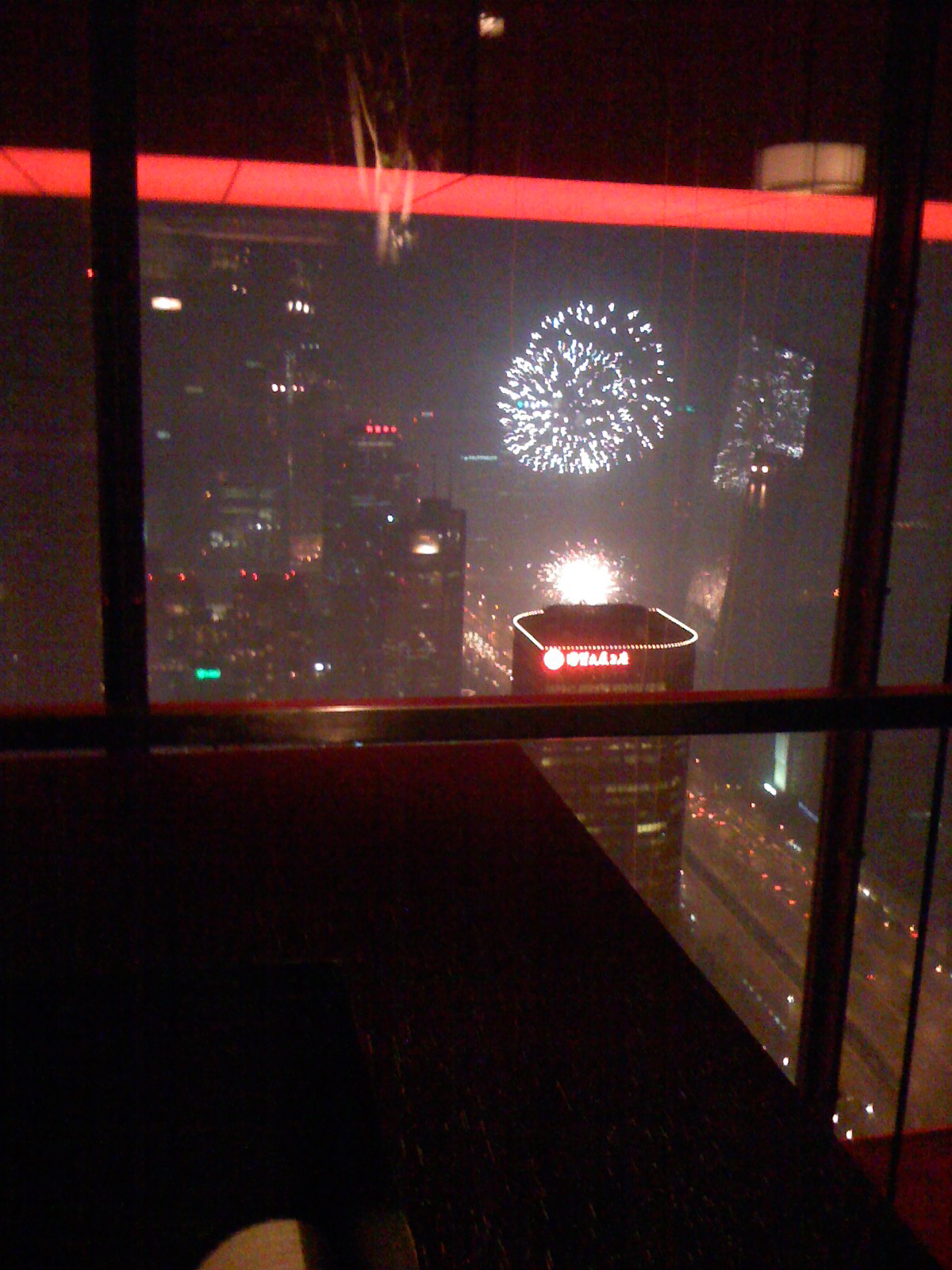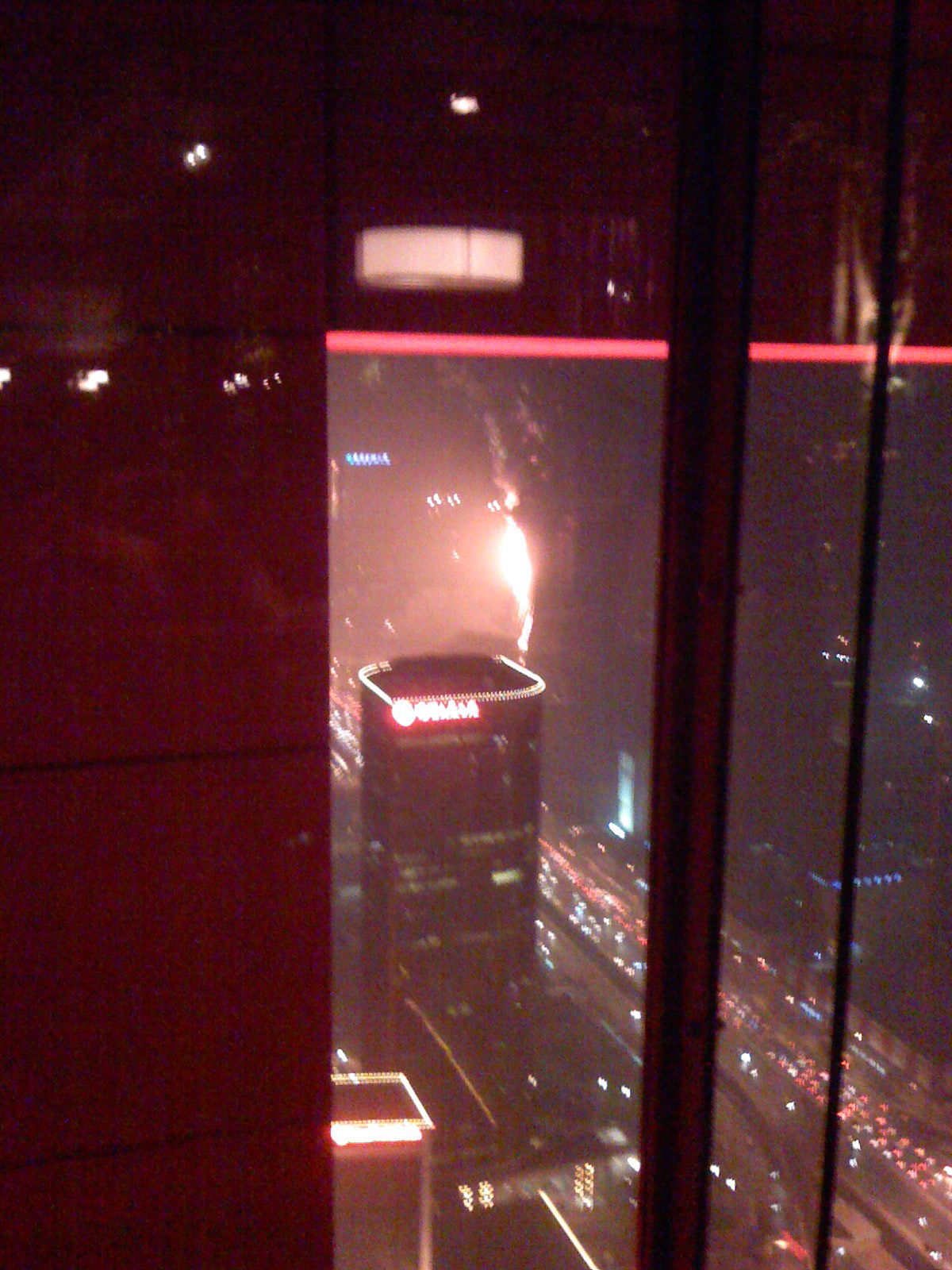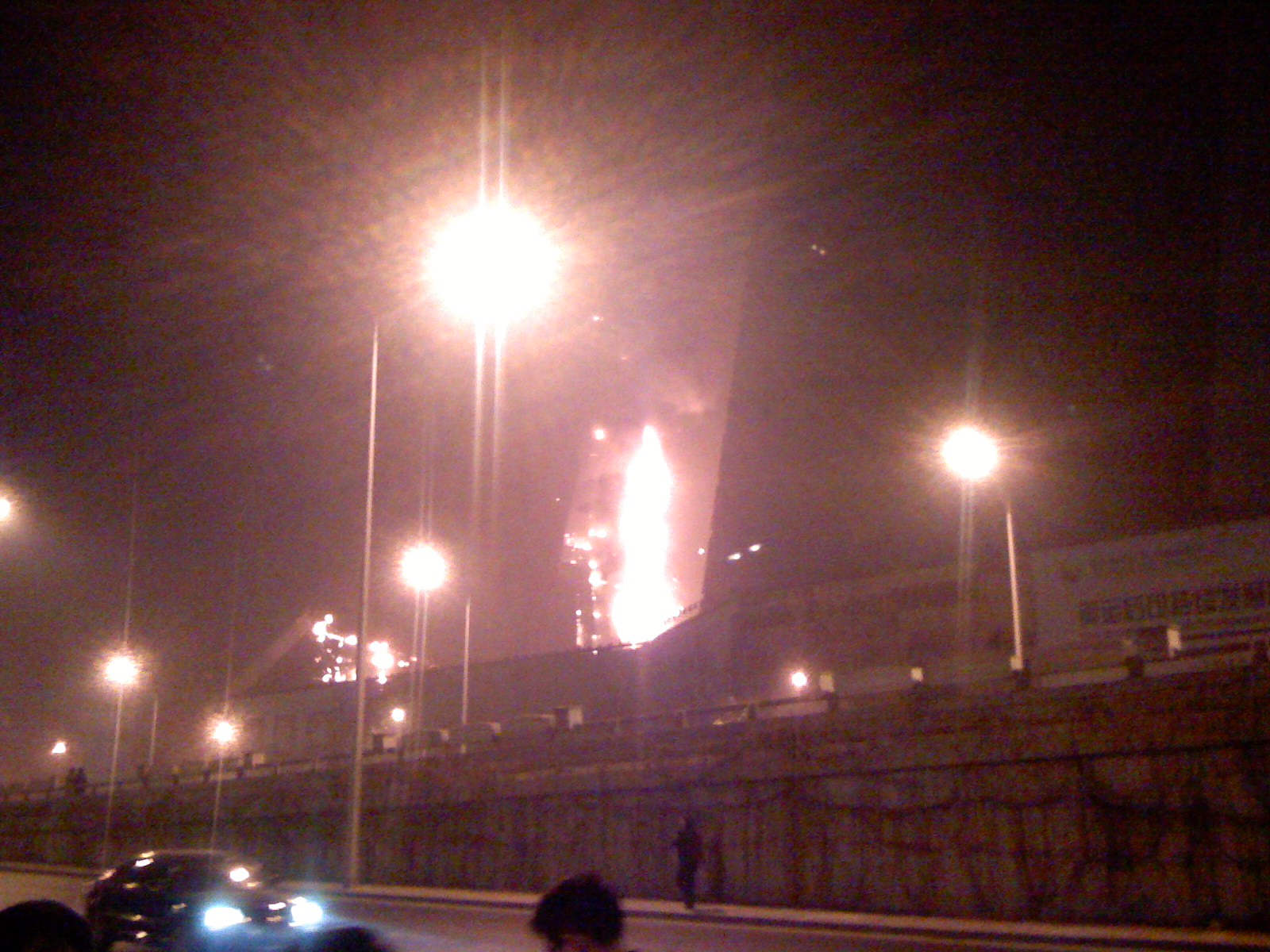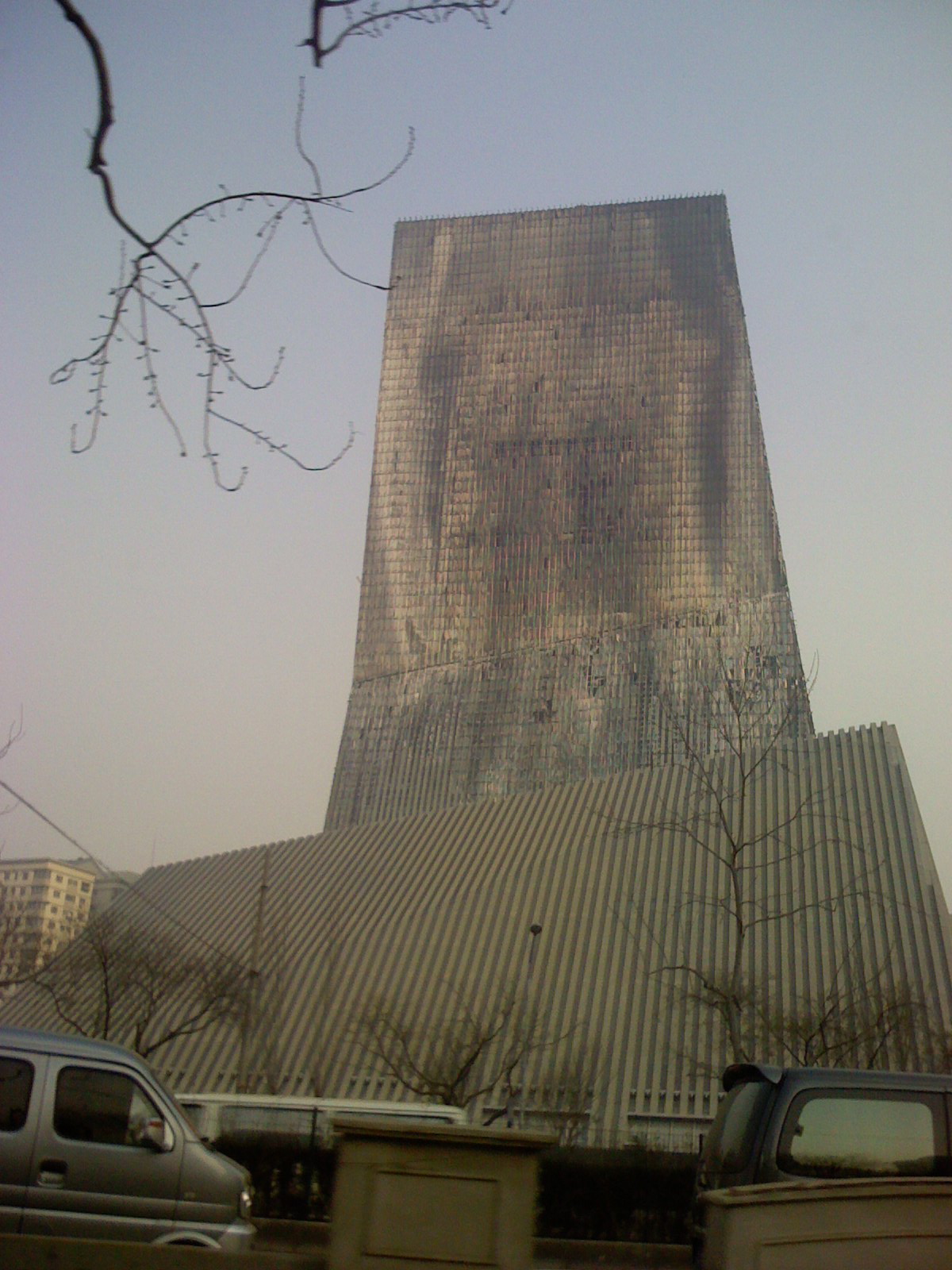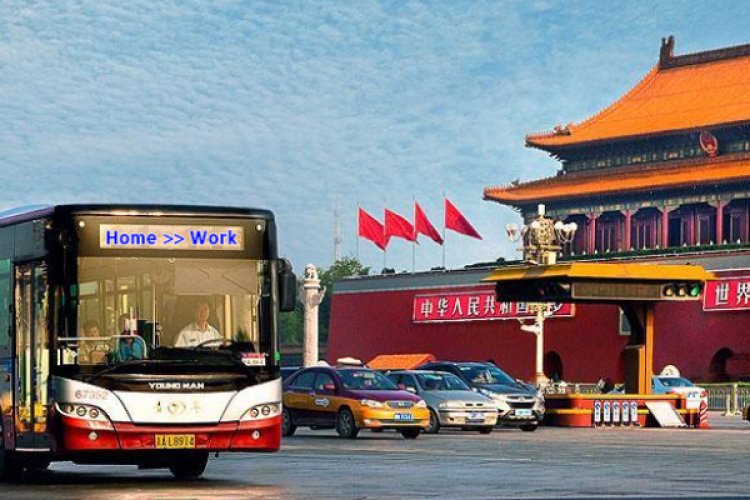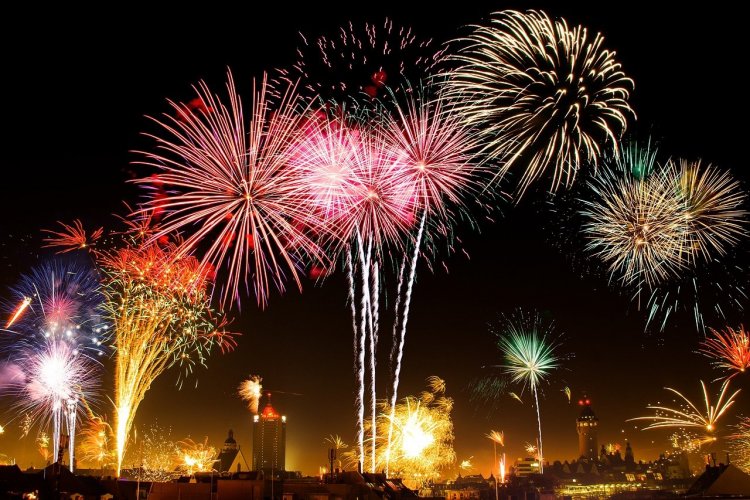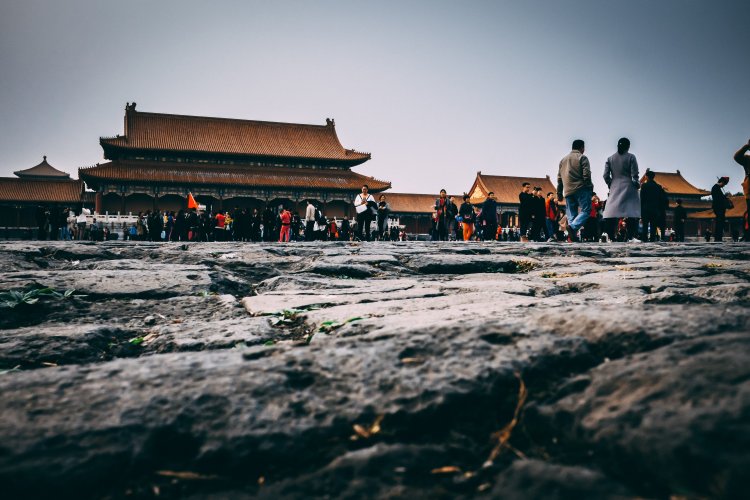Seven Years Later: New Photos of the Spring Festival CCTV Hotel Fire
Seven years ago, the Mandarin Oriental hotel next to the iconic China Central Television (CCTV) tower on Guanghua Lu caught fire and burned, killing one firefighter and leaving the Central Business District with a skyline scar that still has not fully healed.
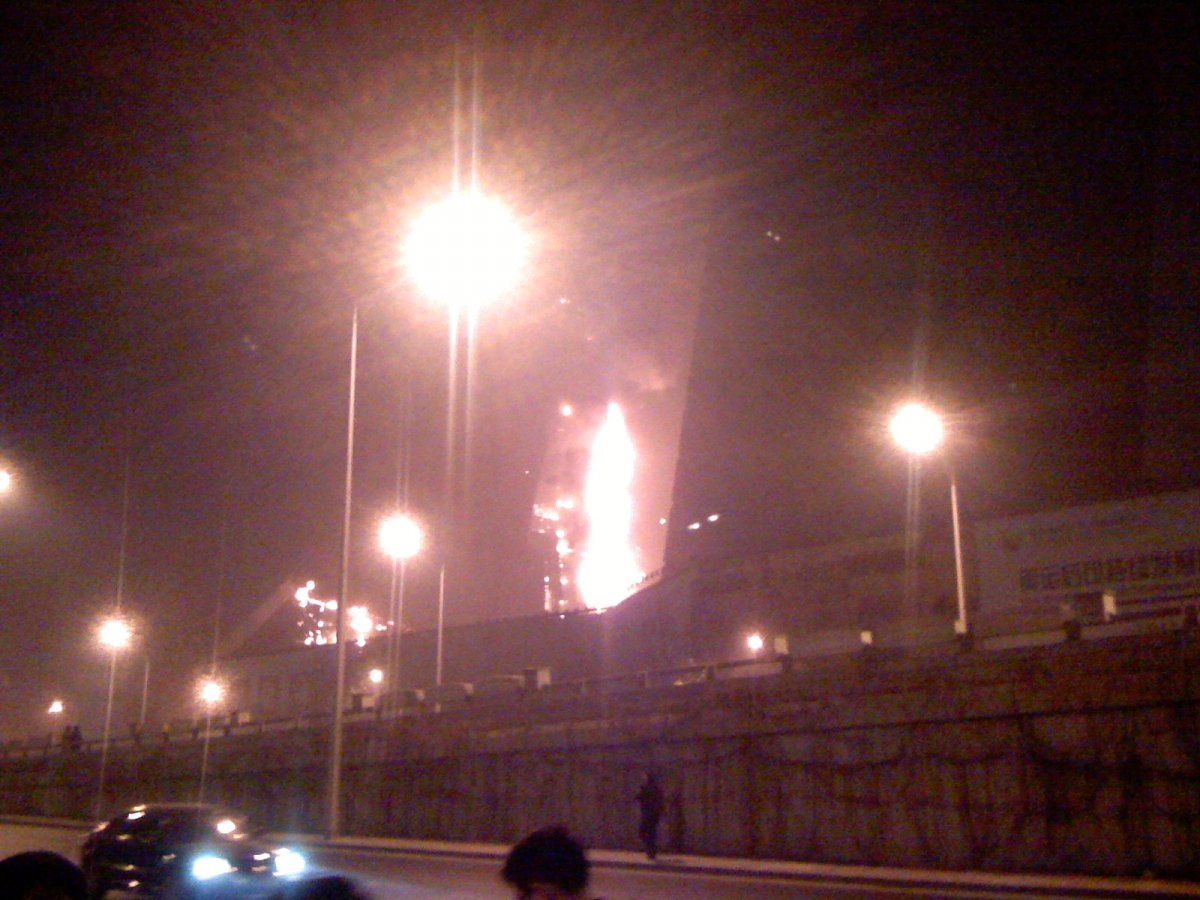
The fire began around 9pm on February 9, 2009, on the roof of the Mandarin Oriental, which had not yet opened for business. Reports conflict as to whether the fireworks display that caused the fire was actually on the hotel's roof, or whether a stray pyrotechnic from nearby revelers. Our photos above show the display underway, just before the fire began, as seen from the China Grill on the 66th floor of Yintai Center to the south. Investigators indicated that the building's unique zinc alloy skin caught fire and burned, sending flames gradually cascading down the exterior of the building before igniting the interior.
A hospitality industry source who watched the fire from near the site explained that the hotel's Rem Koolhaas-designed architecture actually contributed to the speed and size of the conflagration. With rooms for the hotels placed entirely on either side of a 90-meter-tall atrium, as soon as the roof burned through, the hotel became a giant chimney, funneling air to the fire, ultimately consuming the building. The fire was visible throughout the CBD but it took as long as 90 minutes for fire trucks to respond to the fire.
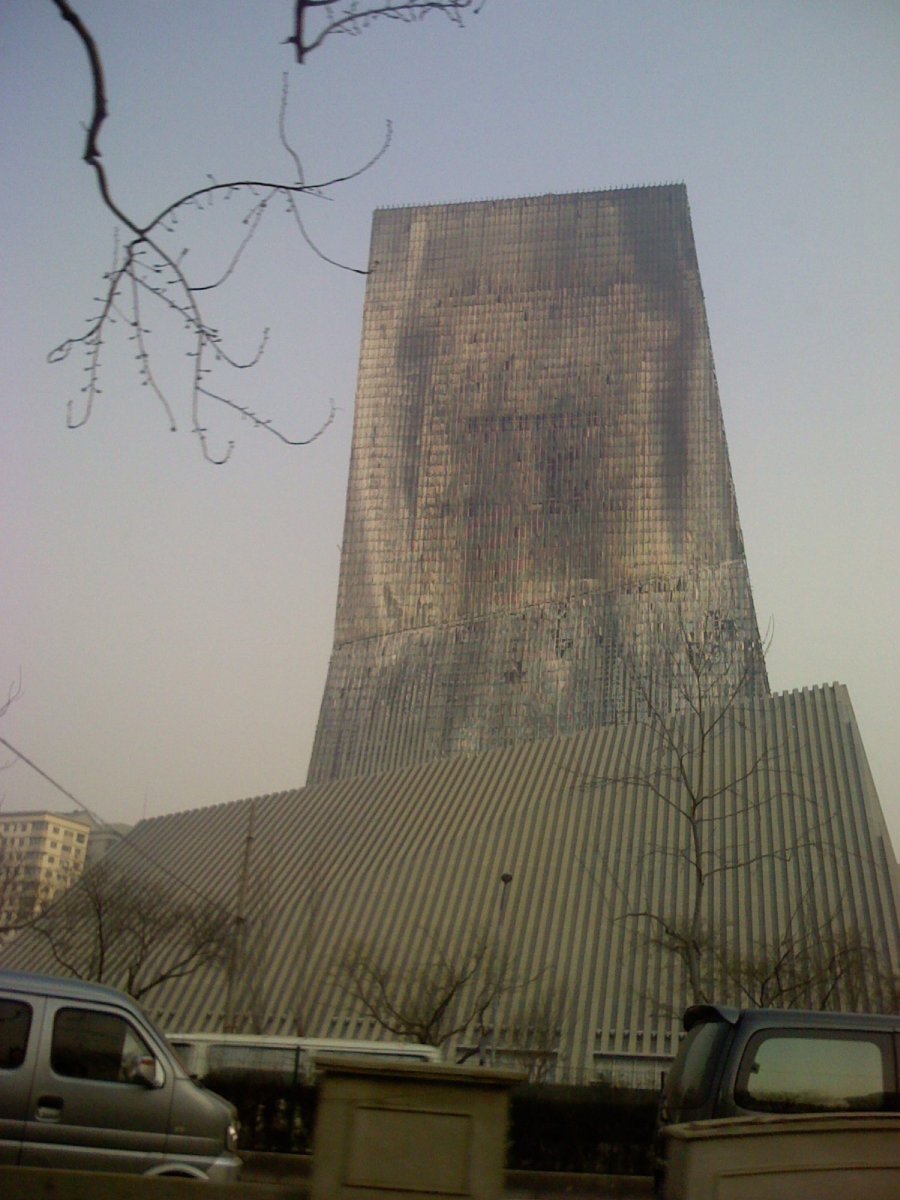
The Beijinger contributor and Beijing Boyce and Grape Wall of China founder Jim Boyce live-blogged the event, noting that initial reports about the CCTV building being on fire were incorrect, and following the fire's progress down the face of the building, accompanied by explosions, and after an hour and a half, the arrival of a fire brigade that sadly cost a life.
Huge crowds gathered on the west side of the Third Ring Road to watch the blaze, with those having access to nearby Fortune Plaza heading to their offices for an unrivaled view above street level. By midnight, the fire was under control, but a disaster like this in the commercial center of a city that had been in the global spotlight less than a year earlier was just the beginning of a political maelstrom that followed.
With fireworks inside the Fifth Ring Road only permitted in 2005 after a 13-year ban, many Beijingers thought the fire would mean the end of inner city pyrotechnic celebrations. However, municipal officials wisely understood there was no connection between the CCTV blaze and the average citizen's firecrackers. In 2010, fireworks sales continued without any additional restrictions.
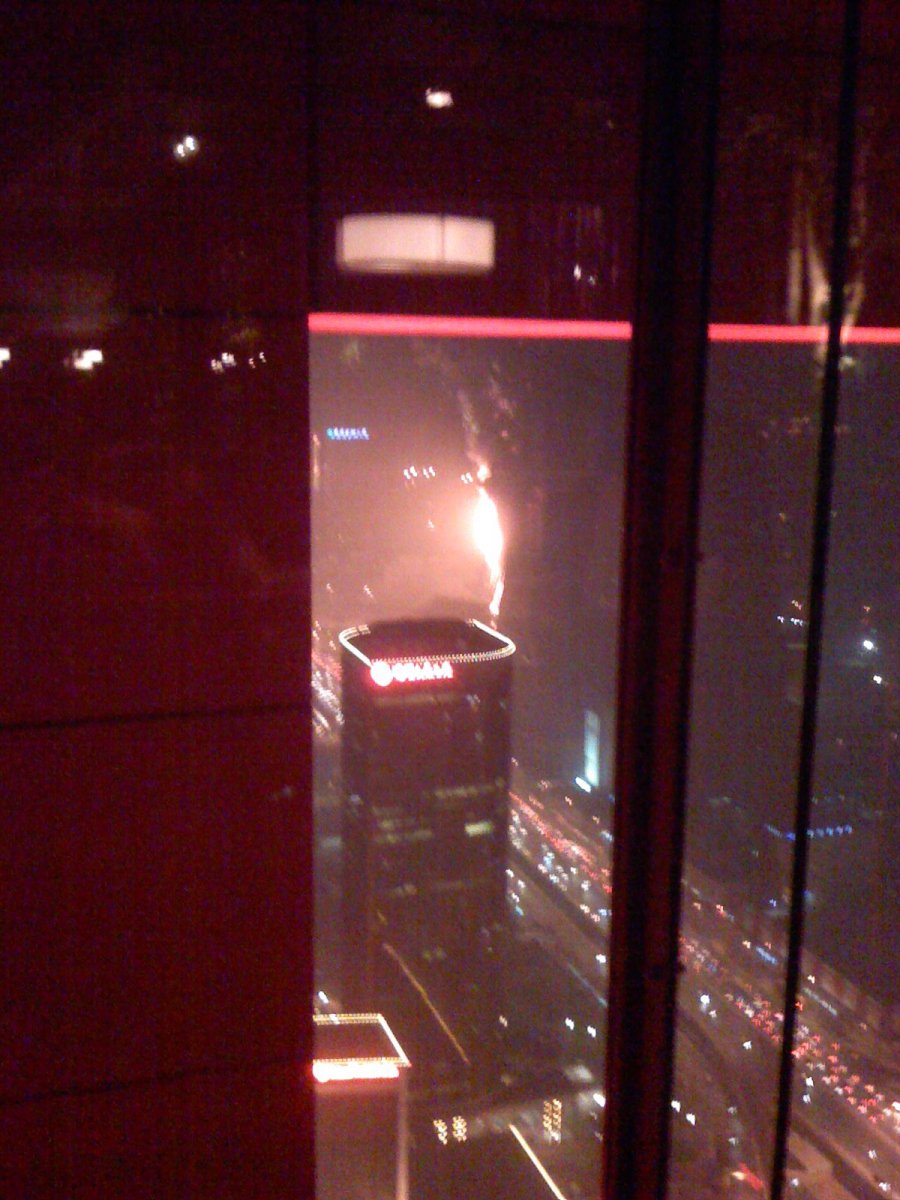
While the fate of the building and those responsible hung in the balance, the charred hulk of the building remained at the side of the Third Ring Road, standing like an upright shipwreck, a reminder of a night gone wrong and a situation unresolved.
Ultimately, in 2010, 20 people were sentenced to jail terms for the fire, with Xu Wei, who had been the head of CCTV's construction department (no connection to the rock musician of the same name) receiving a seven-year jail term, and others getting between three and six years.
Seven years later, the hotel is still not open, although Mandarin Oriental announced in 2015 that it will open this year.
You can see close-up videos of the event courtesy of the Beijinger reader Tom van Dillen via his Vimeo here and here.
Photos: Steven Schwankert/the Beijinger
Related stories :
Comments
New comments are displayed first.Comments
![]() Steven Schwankert
Submitted by Guest on Wed, 02/10/2016 - 20:37 Permalink
Steven Schwankert
Submitted by Guest on Wed, 02/10/2016 - 20:37 Permalink
Re: Seven Years Later: New Photos of the Spring Festival CCTV...
The headline doesn't say "great new photographs."
![]() redbaron
Submitted by Guest on Wed, 02/10/2016 - 17:59 Permalink
redbaron
Submitted by Guest on Wed, 02/10/2016 - 17:59 Permalink
Re: Seven Years Later: New Photos of the Spring Festival CCTV...
Erm, guys. those photographs are terrible.
Validate your mobile phone number to post comments.

